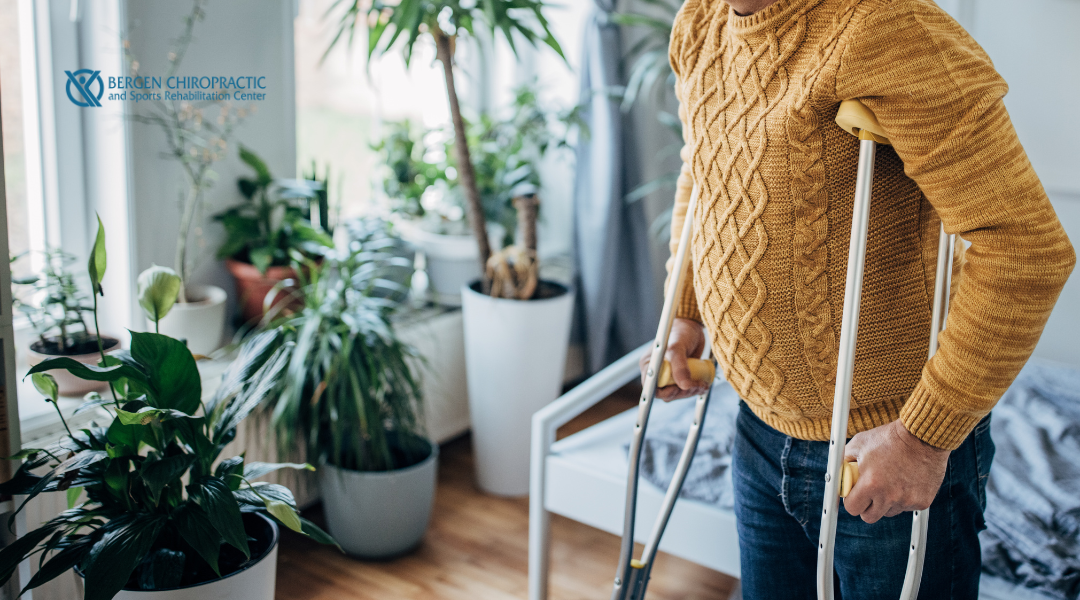Scoliosis is perhaps one of the better-known health conditions that affect the spine. Sometimes causing pain and nerve damage, more severe cases of scoliosis can make everyday tasks difficult. Thankfully, there are solutions to help those suffering from adult scoliosis. Whether through physical therapy management or surgery, science and medicine have found ways to aid people with scoliosis. Continue reading to learn more about adult scoliosis, its symptoms, and treatment options!
What is Adult Scoliosis?
While it is natural and healthy for the spine to have a forward-and-backward curve, scoliosis is a condition that causes the spine to curve beyond its healthy limits. An abnormal curvature of the spine, scoliosis causes the spine to rotate and develop a side-to-side curve. Scoliosis can cause a curve as mild as 10 degrees or as severe as over 100 degrees!
What are the Main Scoliosis Types?
There are four main types of scoliosis that progress in relatively similar fashions:
- Congenital scoliosis
- Neuromuscular scoliosis
- Adolescent idiopathic scoliosis
- Adult de novo scoliosis
Congenital, neuromuscular, and idiopathic scoliosis are primarily diagnosed in children. The most common type of adult scoliosis, degenerative scoliosis, curves the spine with age. Luckily, spinal curvatures are often mild cases and do not require treatment.
What is Causing My Adult Scoliosis?
Adult scoliosis stems from various causes depending on its type. Scoliosis without a known cause, or idiopathic scoliosis, is often uncovered during childhood or adolescence growth. Adult scoliosis can also be a case of pediatric scoliosis, left undiscovered until adulthood. However, it is more common for adult scoliosis symptoms to develop through aging and degenerative changes.
There are four types of scoliosis that adults can develop:
- Degenerative scoliosis is found in older individuals whose spinal discs have deteriorated with the natural aging process. Aging can thus lead to the compression of the vertebral column and the development of abnormal spinal curvature.
- A little more mysterious, traumatic scoliosis is somehow caused by severe trauma or accidents. How a spinal deformity develops in such a manner is still unknown.
- Pathological scoliosis is a result of tumors pressing on the spine. Spinal tumors can exert such a strong pressure on the spine that a curvature develops.
- As mentioned earlier, idiopathic scoliosis represents cases of undiagnosed adolescent scoliosis. Instances of such conditions are rare and difficult to confirm or track.
Common Adult Scoliosis Symptoms
Scoliosis-related symptoms are not actually caused by the curvature of the spine, although they are connected with the degeneration of the spine as time passes. Such symptoms are treated in a similar fashion, despite the actual diagnosis of scoliosis.
Although most cases of adult scoliosis are symptomless, back or leg pain is a common sign of this disease. Back pain can result from multiple medical conditions, including:
- Arthritis
- The inability to stand upright
- Weakness of the core musculature
Pain, numbness, or weakness in the legs are common symptoms of spinal stenosis, which occurs if there is tremendous pressure on the nerves in the lumbar spine.
Sometimes, body changes such as the following may develop:
- Height loss
- Shortness of breath or quick fatigue
- Uneven alignment of the pelvis and hips
Depending on the degree of the spinal curvature, internal symptoms may be accompanied by changes in the body’s outward appearance. For example, a bulge or spinal deformity can become visible due to muscle or rib cage rotation. An inability to stand upright might also be a symptom.
How is Adult Scoliosis Diagnosed?
The first step toward diagnosis and treatment is for your healthcare professional to examine you and your family’s medical history. Some common diagnostic questions circle around:
- Family history
- When you first notice the spinal changes
- Curve progression
- Presence and location of any pain
- Bowel, bladder, or motor dysfunction
Next, wellness professionals will perform a physical examination and medical evaluation to check the shape of your spine curves and your movement. They may also use reflex, sensation, and muscle-strength checks to test your nerves.
After a physical exam, your doctor will recommend X-rays to comprehensively inspect your spine’s front and side. With the help of such imaging, your doctor can determine the type and severity of your scoliosis.
What are My Non-Operative Treatment Options?
For adults diagnosed with scoliosis, the extent of the spinal curve may not necessarily determine the treatment options. Instead, treating scoliosis stems from the goal of relieving symptoms and not necessarily curing the curve.
As such, many patients with adult scoliosis conditions that are not severe cases are treated through noninvasive means, such as:
- Regular medical observation
- Over-the-counter pain medications
- Core-strengthening exercises to improve abdomen and back flexibility
Scoliosis Exercises
Often, your doctor will recommend using physical therapy to maintain strength and relieve pain. A physical therapist may help improve scoliosis by:
- Working to improve posture
- Doing low-impact exercises
- Daily stretching
- Staying active
Arm/Leg Raise
Arm/leg raises are useful to strengthen your lower back and core muscles, supporting your spine. To perform this exercise:
- Start by lying on your stomach with your chin or forehead on the ground.
- With your legs straight and arms extended overhead, slowly raise one arm off the ground, hold it for a moment, and then slowly lower it back to the ground.
- Repeat these steps for your opposite leg and arm with 15 repetitions each.
Pelvic Tilt
Pelvic tilts strengthen your abdominal muscles. Be sure to perform them on a yoga mat for support:
- First, lie on your back with your knees bent and both feet flat on the floor, toes pointed forward.
- Pull in your belly button so your pelvis pushes toward the ceiling and your back flattens against the ground.
- Hold the position for 20 seconds, and then slowly relax.
- Repeat the exercise 10 times.
Cat/Cow Stretch
Cat/cow stretch focuses on the muscles and tendons that support your spine:
- Start by getting on your hands and knees. Keep your arms straight under your shoulders and your knees under your hips.
- While looking at the floor, keep your head straight in line with your torso and spine.
- Now, round your back and lift your spine toward the ceiling. At this point, your eyes should face your belly.
- Hold the position and take a deep breath before slowly lifting your chest and tailbone toward the ceiling. Let your stomach sink toward the ground as your eyes look up toward the ceiling.
- After another deep breath, slowly round your back and lift your spine toward the ceiling.
- Continue alternating between the poses to gently stretch and strengthen your abdominals and lower back.
Latissimus Stretch
Finally, the latissimus stretch loosens and strengthens tight lat muscles:
- To begin, stand with your feet shoulder-width apart and your knees slightly bent.
- Now, reach overhead and grab your left wrist with your right hand.
- Next, with most of your body weight on your right leg, bend at your right side until you feel a gentle stretch along your left trunk.
- Hold the position for 5 to 10 seconds before returning to the start position by pushing from your right foot.
- Be sure to repeat the exercise on your left foot and the opposite side for maximum benefits.
Invasive Treatment Options for Adult Scoliosis Patients
If oral medications or physical therapy are inadequate for reducing pain, your doctor may recommend epidurals around the spinal cord or nerve block injections for symptom relief.
Surgery, another option for severe scoliosis, is considered a last-resort avenue because of the risks associated with spinal surgery.
Spinal Injections
Sometimes, scoliosis can irritate or pressurize the nerves in and around the spine, causing pain, numbness, and tingling in your lower back down to your feet. If this is the case, spinal injections such as steroids and local anesthetic may offer some relief. Unfortunately, the benefits of such injections last for only a few weeks or months and are not a long-term solution.
Back Braces
Not widely used in adults with scoliosis, back braces are occasionally helpful in providing pain relief through spinal support. A brace may be an alternative to surgery if you are not well enough to undergo such an operation.
Surgical Treatment Plan
While it is not required for most patients with adult scoliosis, lumbar decompression surgery may be considered for the following reasons:
- If the curve in your spine is severe or significantly worsening
- If you have a spinal imbalance
- If you have severe back pain and other treatments have not helped
- If your spinal nerves are being irritated or squashed
Should surgery be deemed necessary, there are three different surgical techniques:
- Laminectomy
- Discectomy
- Spinal fusion
A laminectomy procedure removes one section of bone in your spinal canal to relieve nerve pressure. The second option, a discectomy, is where one section of discs between the vertebrae is removed to relieve pressure. Thirdly, a spinal fusion takes two or more vertebrae and joins them together to stabilize, strengthen, and straighten the spine. Oftentimes, a combination of these techniques is used instead of just one.
A posterior spinal fusion is the most common type of special surgery for adults with scoliosis. For this procedure, the orthopedic surgeon makes an incision from the back, places screws to collect scoliosis, and then ‘welds’ the vertebrae together with bone chips. The surgeon may take these chips from elsewhere in the patient’s own body or from a donor through a bone bank.
It may take six months to over one year for the healing process to be complete. However, recovery from spinal surgery only takes four to six weeks. During the recovery period, rods, screws, or other implants may be used to hold the spine in alignment. After the fusion is complete, the implants are no longer necessary but are left within the patient to avoid additional surgery. Normal mobility is achievable after healing if the treatment primarily targets the thoracic spine. However, treatment in the lumbar spine will result in more restricted sideways movement.
Dr. Doerr is the Best Chiropractor in New Jersey for Treating Adult Scoliosis!
At Bergen Chiropractic and Sports Rehabilitation Center, our chiropractic team, under the leadership of Dr. Gregory Doerr, adheres to the highest and most professional medical standards to provide superior chiropractic help. Our mission is to provide unparalleled patient care in a comfortable, healing atmosphere.
Access our contact form or call us at (201) 945-4075 to learn more about our chiropractic care services! Our offices at 532 Anderson Avenue, Cliffside Park, NJ 07010, and 62 Summit Ave, Hackensack, NJ 07601, are ready to welcome you as we proudly serve the areas of New York, New Jersey, Philadelphia, PA, and Baltimore, MD. Also, feel free to access our blog, Facebook, and Instagram pages for more information on chiropractic adjustments!
References
- “Adult Scoliosis: Symptoms, Diagnosis, Treatment & Outcome.” Cleveland Clinic, my.clevelandclinic.org/health/diseases/15837-adult-scoliosis. Accessed 19 Sept. 2022.
- “What Are the Four Types of Scoliosis?” Scoliosis Reduction Center, www.scoliosisreductioncenter.com/blog/what-are-the-4-types-of-scoliosis. Accessed 19 Sept. 2022.








